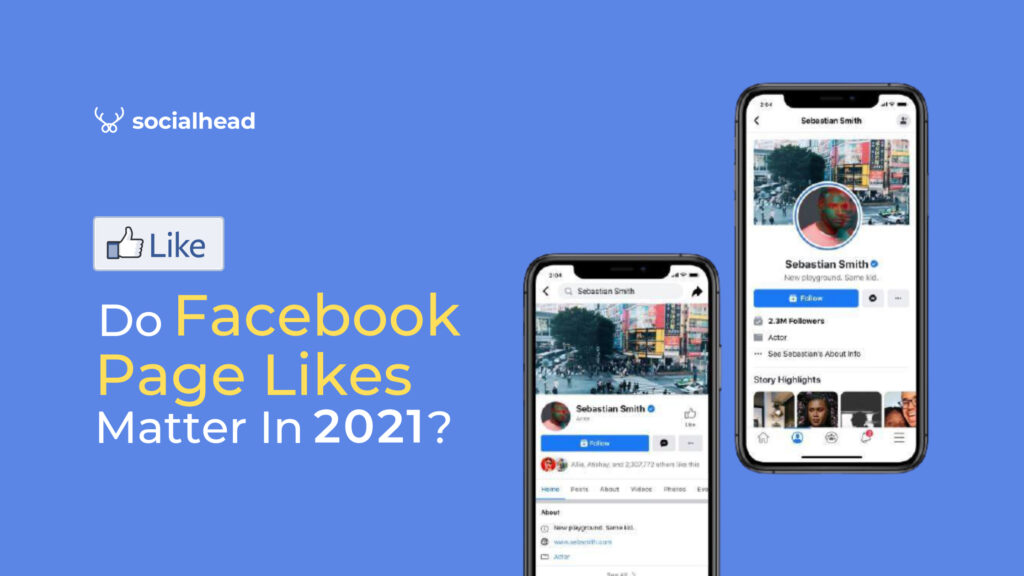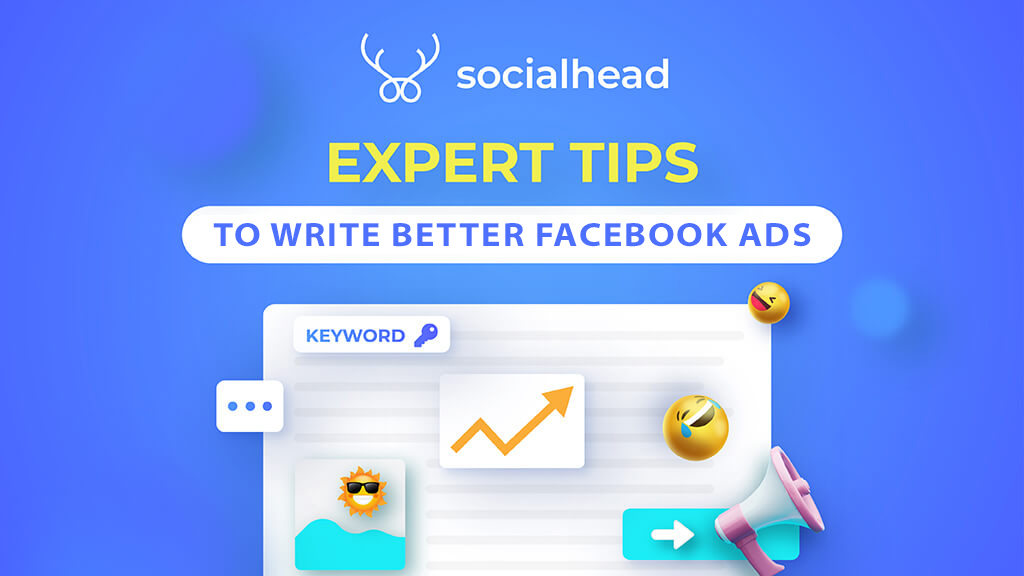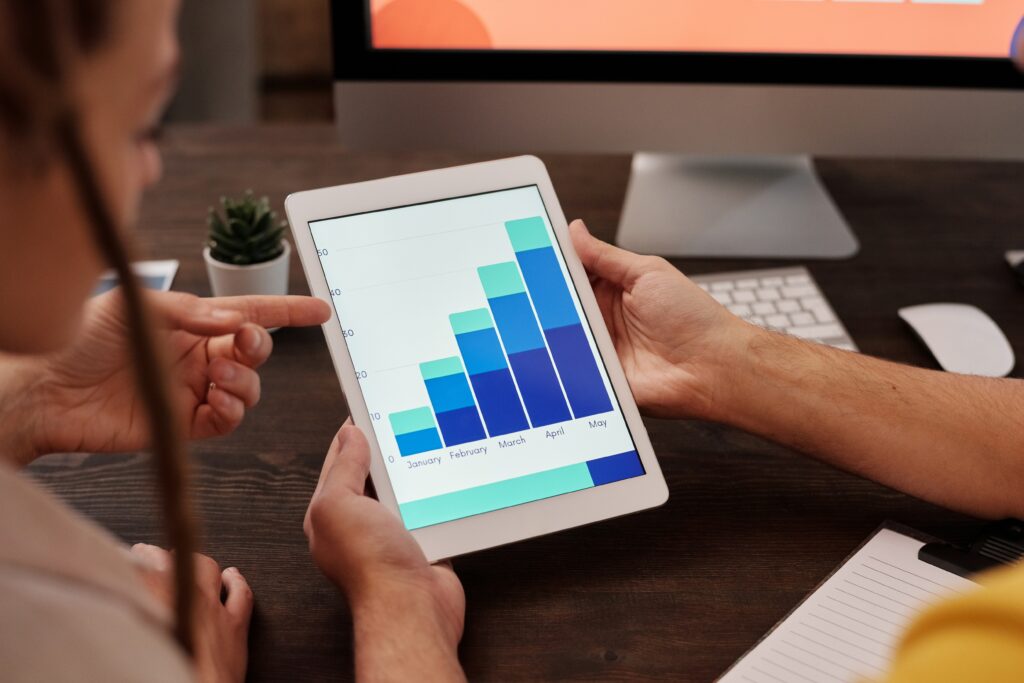It’s 2021 and Facebook Page likes are no longer an important metric for marketers to look at when assessing an online business’ performance.
In this article, we’ll explain why this is the case and introduce you to the 4 most crucial Facebook metrics you need to keep an eye on to better evaluate your Facebook campaigns’ performance.
Why Facebook page likes don’t matter in 2020?
Facebook page likes need to be examined in association with reactions per post
According to Facebook, Page likes are the number of people who like your page and those who like your page can follow your page posts to stay informed about your business.
So ideally, do more page likes mean more people interested in the content, your products, or services? Or It can even mean more brand influence, brand awareness which leads to more sales, isn’t it?
Yes and no. Even though page likes do reflect the popularity of your brand and it does translate to customers’ interest which brings more sales to some extent.
However, what it really means is just the number of people who press the like button on your page, that’s the plain hard truth so you shouldn’t over-associate it with other things.
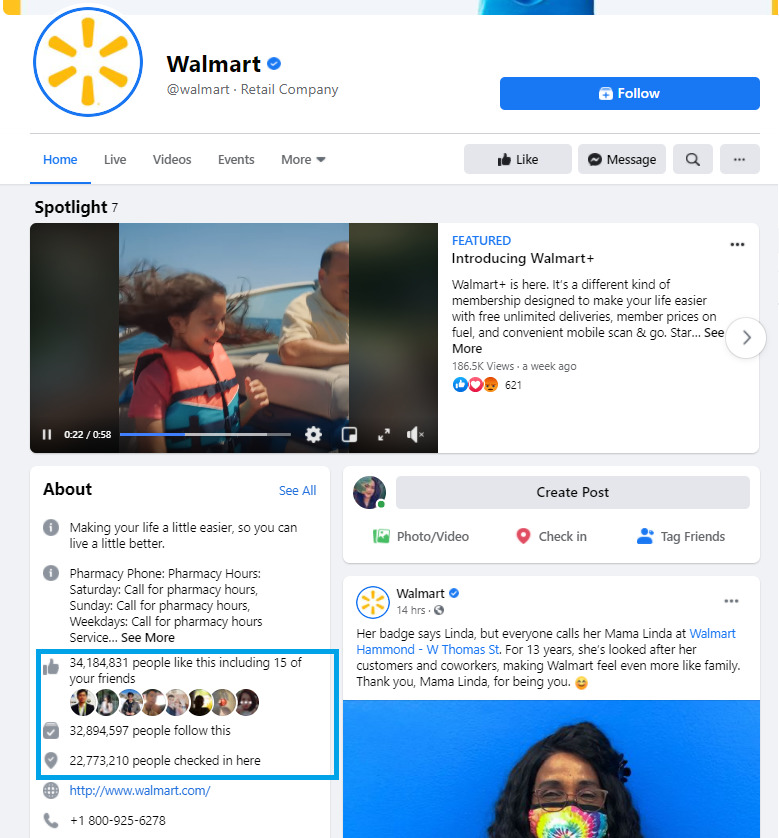
Though Walmart has over 34 million page likes, the numbers of reactions per post are just around hundreds
More Page likes on Facebook doesn’t mean more potential customers and sales
People who like your page might be interested in your page content because they think your page’s content might be relevant to what they want to see. However, many people got the wrong idea about the people who like their page and potential customers. Yes, there’s definitely some potential in the pool of audience who like your page but the percentage of potential customers is all that matters.
I used to work with many businesses, where they ask me to run Facebook page like ads for them, but when I ask them, what do they really want, it all comes to the same answer: more sales, revenue…etc.
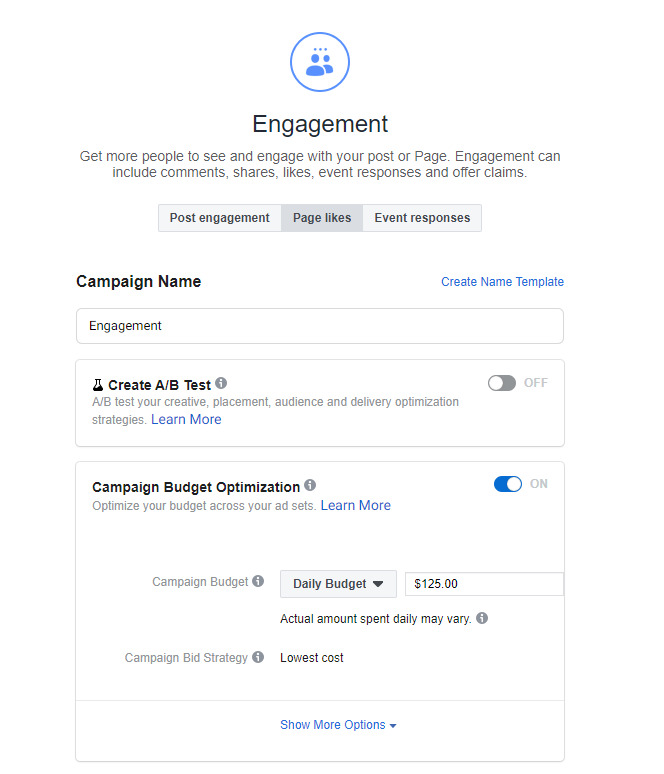
Facebook Page Likes ads are not a solution to increase sales or drive in more potential customers.
I refused to run Facebook page likes ads for them and explain that if you want to increase more sales, page likes are not going to help. And they should focus on conversion ads instead because the Facebook algorithm will actually optimize your conversion ads to show for those who tend to convert while page likes ads will target those who tend to like pages.
So if you keep hoping that Facebook page like ads will bring you more customers and sales, it’s not going to work that way!
Irrelevant Facebook Page likes could be a waste of your budget
In addition, to optimize for the best cost per page like, some marketers will target the wrong audience, or even using the wrong content to get people to like their page.
Let’s say I’m running a Jewelry store that has both a website and a brick-and-mortar store. For the website, my customers come from all around the world, however, most of them are from the US and would come to the physical store to buy products.
However, those people from the US, UK, and North America might cost me 0.4$/page like. It’s over my budget, so I decided to also target people from other countries in my customer pool such as India, Russia, Arab Saudi…to increase online sales from other countries.
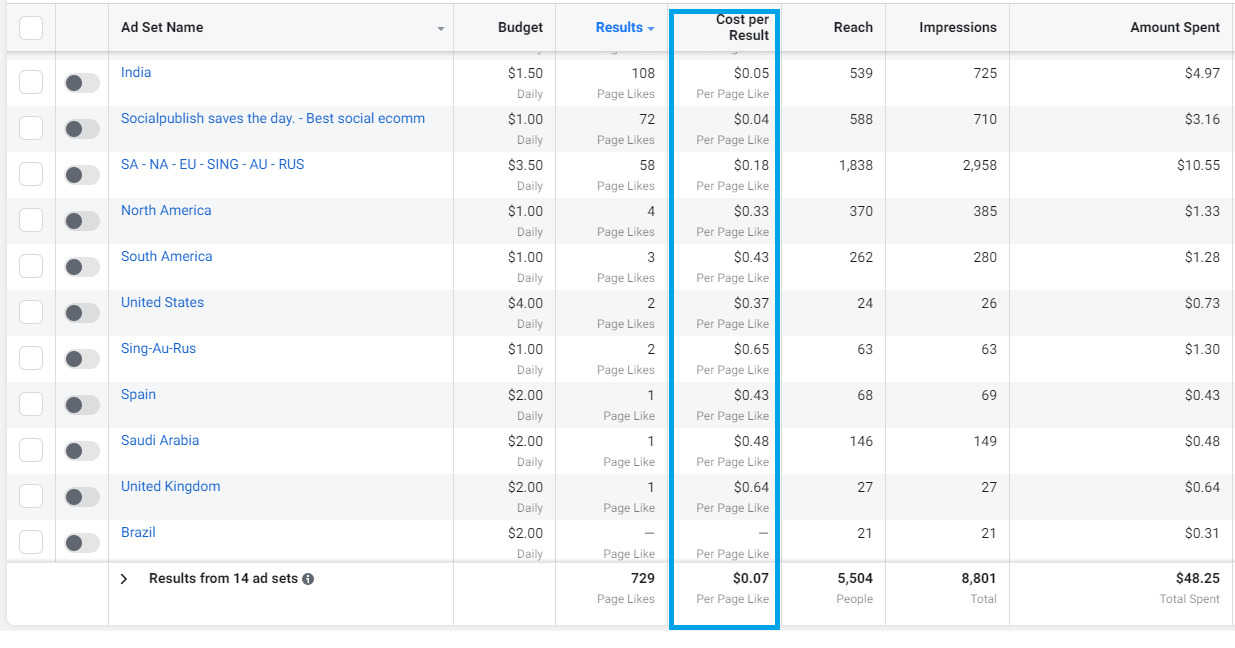
Page likes based on geolocation targeting.
I was amazed the next day because the cost decreased to 0.05$/page like and I got so many likes. I assume that people in other areas might become my customers too, who knows, they like my Facebook page so that’s the deal.
After 1 month of running that campaign, I got feedback from my team that they got so many inquiries about the jewelry, they were overloaded but the financial statement said a different thing. Revenue didn’t increase, AT ALL.
So what I really aimed for was revenue, now I got my employees overloaded serving non-potential customers who couldn’t get my product as easy products even though they were drawn to it and my revenue stream did not increase while I have to pay for the ads that get me those non-potentials.
Here come the questions, what other important metrics you should track when doing business on Facebook?
Other important Facebook metrics brands should track
Engagement rate
What is the engagement rate?
Engagement rate is the ratio of people who engage (like, share, comment, or click to your link) with your content out of the total reach of your page or your post.

Formula to calculate engagement rate
Instead of doing all the complicated math. You could check the engagement rate by going to Page Insight section > Get “engagement” divided for “reach” then you get the ratio and compare them week on week, MOM, or however, you want to see the performance changes.
In the example below my engagement rate would be = 146,115 / 1,122,152 = 13.2%
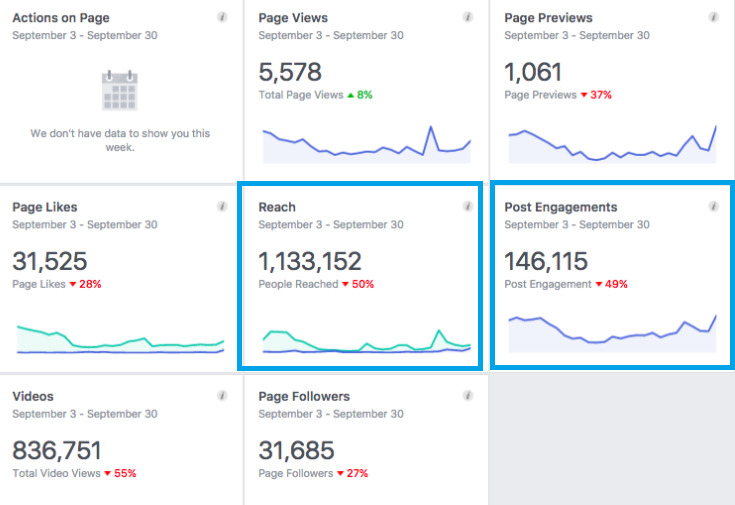
You can check total engagement and reach in the insight section on your Facebook page
Why is engagement rate important?
This is one of the very important Facebook metrics many marketers and business owners usually neglect. It’s actually a very insightful metric for marketers to see how well their Facebook page works and the percentage of people who really care about their business among all the page likes.
As a matter of fact, Facebook won’t show your post to all your followers, its algorithm will only show it to a certain number of people who interact with your post or page recently. In another word, you have to keep your content team working hard because the longer you leave your audience cold-hearted, the more difficult it will be to get them back.
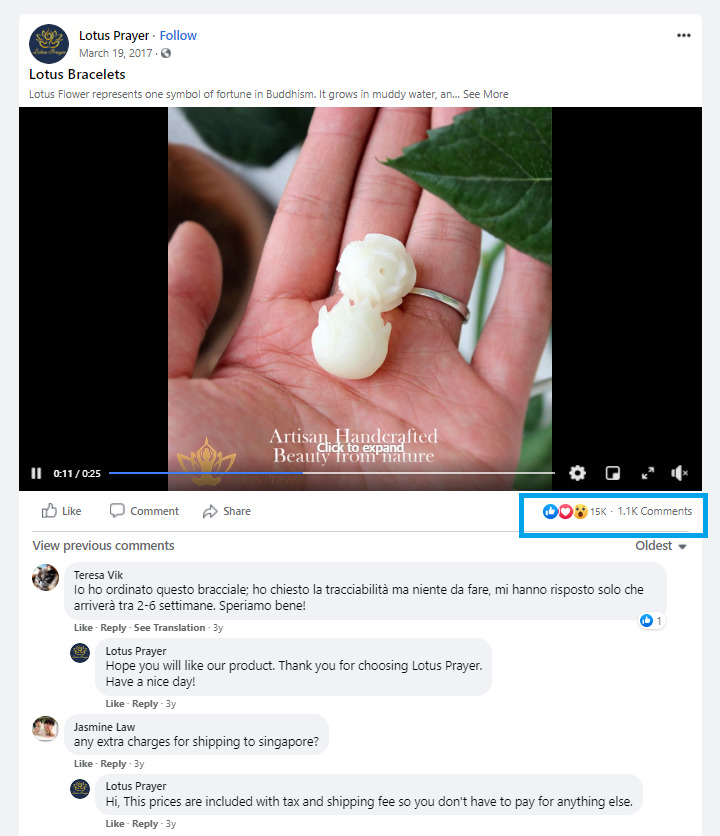
Customers engaged with the Facebook post by commenting to ask for products’ price and it showed their interest in buying the product
Engagement rate could be a much closer Facebook metric to your customer buying interest than page likes since it shows how much people actually care instead of an accumulated number that gradually grows as you run more ads and maintain your social media calendar.
CTR – Click-through rate
What is CTR?
CTR or Click-through rate is one of the essential Facebook metrics for marketing measurement that marketers and business owners should keep in mind, this in fact will really reflect how your messages, content really work.
So what is CTR? Click-through rate (CTR) is the ratio of the number of clicks on a link or call to an action divided by the number of times people were exposed to the link or the number of impressions.

Click-through rate formula
Though it’s noteworthy that when you evaluate the CTR metric for your Facebook ads, do compare it with the average CTR in your specific industry and niche to have the most objective insight into your campaigns.
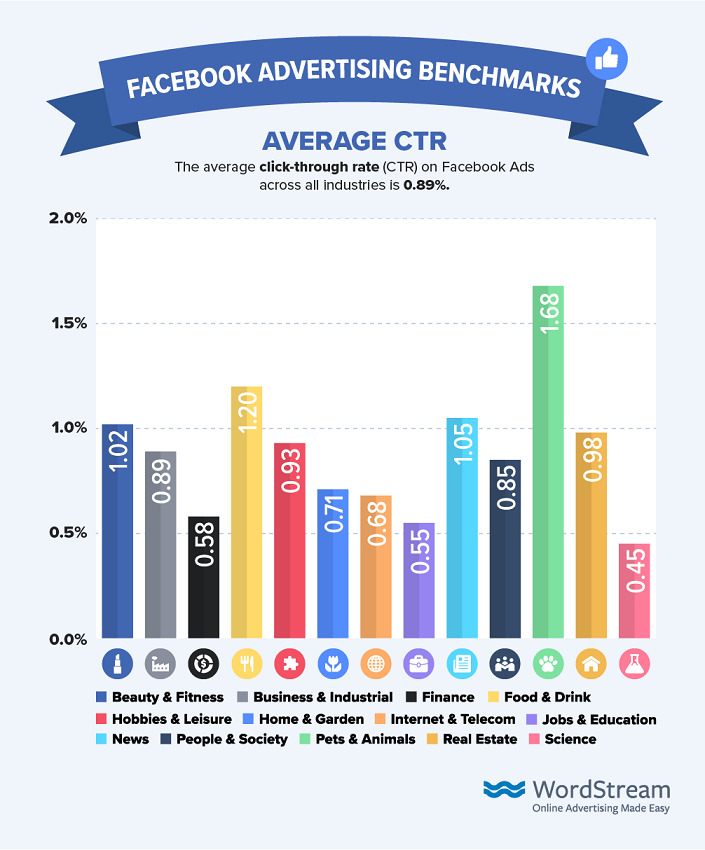
Average Facebook CTR benchmark by industry (Source: Wordstream)
Why is CTR important?
In fact, most of the time, when people don’t click on the link, it means that your ads or your content don’t catch their attention or you are targeting the wrong audience. Regardless of how many likes you have on your fan page, if you want to sell more products on your website, you do have to make them click to a link where they can actually buy a product if you have an online store (unless you only have a brick and mortar store where you know you will convert your customers there).
In addition, the more link clicks you have, the more likely your customers are interested in buying your products. Especially in Facebook ads, it’s one of the first metrics to show how effective your ads are in attracting potential customers. So it’s important to dive deeper into customer behavior, which makes them click and improve your CTR.
How to increase engagement and CTR?
Step 1: Research your target audience:
Research is the key to get customer’s insight that will lead to an effective marketing campaign. There are several ways to research your audience including the traditional survey method and a quicker one that allows you to have a glimpse of your key audiences.
Market research with survey
Many big companies prefer using market research with surveys since it’s more accurate due to the bigger sample size and professional data analysis. However, this is also a very expensive method and it couldn’t be done on a daily basis when you have to optimize your page or your ads. In addition, in this digital world, it’s easier to access all the data without having to wait for the survey’s result.
As a digital marketer, I would recommend doing a short survey by holding a mini-game or giveaway, that way, you will get customers excited to join in and also get more likes, engagements as an additional call to action for the mini-game post.
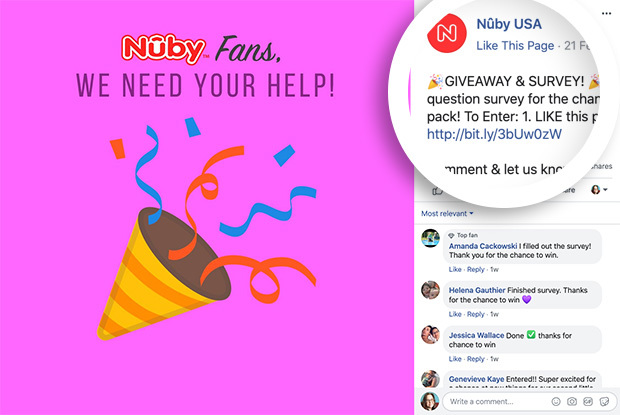
Nuby USA held a Giveaway & Survey to research their customers and attract more followers at the same time
Chat with your customers
You would surprise yourself with how much insight you get by chatting or reading chat logs with your customers. Especially when customers ask about the products through chat since they tend to show their shopping behavior, what products they prefer, and what problem they face. It’s also a google chance to upsell and cross-sell other products.
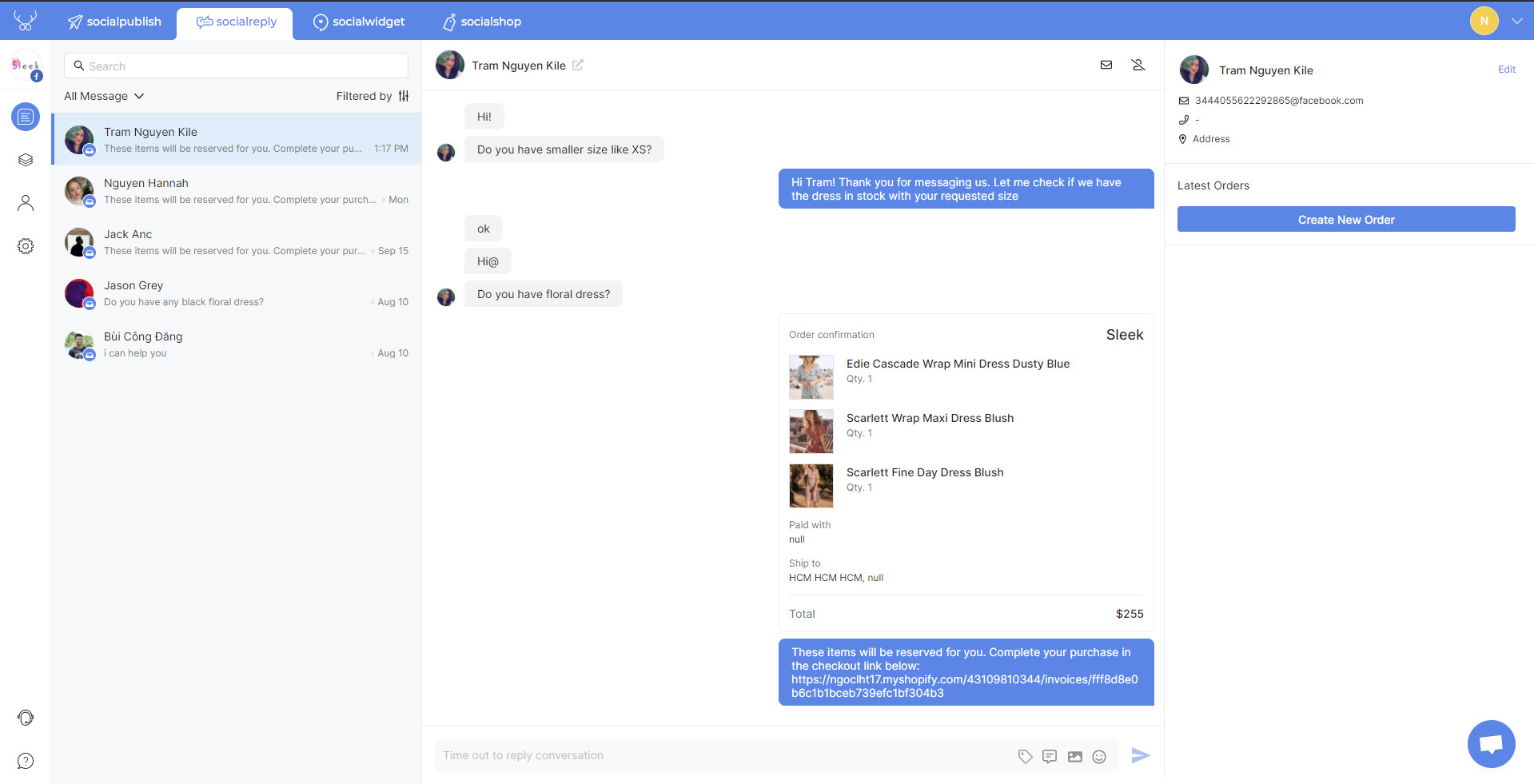
Chat with your customers will give you a deeper insight, it’s also a chance to upsell and cross-sell (Source: Socialreply)
Stalk your customers Facebook account
This is a yet simple old trick but it’s gold since many businesses couldn’t afford expensive market research agencies. In addition, stalking your customer fan page might tell you more about the kind of content they like, who they are, what’re their jobs…and lots of other personal information that you might not get from just doing a survey.
However, to do this right, you have to make a spreadsheet and summarize all the common traits that you see in your customers, and you do have to stalk enough customers to make any decision. I usually have to stalk up to 100 profiles to be able to pull out some useful insight for my campaign.
Step 2: Customize your message and image
After researching your audience, it’s time for you to customize your message to fit their insight. For example, Sephora customized their video content to fit with their audience’s language so they created 2 versions of the same ads in English and French, by that way they can increase their CTR and Engagement rate.

Sephora customized their content to fit with the audience’s language. (Source: Facebook Ads Library)
Step 3: A/B testing your content
A/B testing (also known as split testing) is a process of showing two or more variants of the same content at the same time and comparing which variant drives more clicks or conversions. Simply put, A/B testing the ultimate weapon of brands who market their products digitally and want to improve their Facebook metrics.
Instead of assuming the best message or content that can be delivered to the audience, marketers and brands could actually test out multiple hypotheses and get the result of which variant of the message or content works best.
To A/B test your content, simply goes to Facebook ads manager and when you set up ads, choose to create an A/B test variant. You can find detailed instructions in this article.
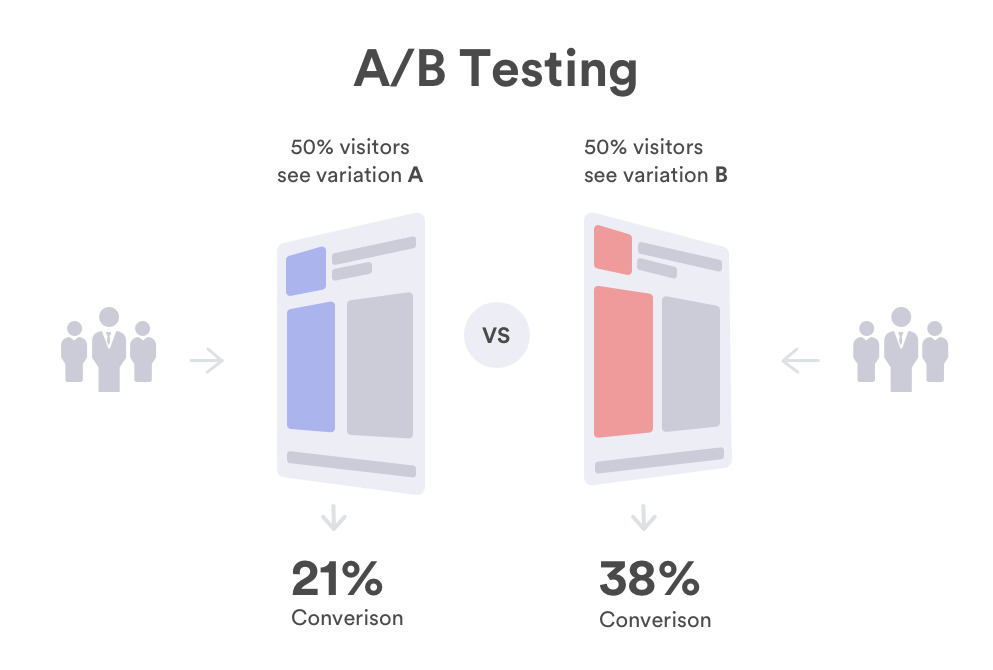
A/B testing is a good way to optimize your content
Step 4: Include call-to-action (CTA)
Always ask for what you want! This motto in life applies so well to ad content. A clear, specific call to action (CTA) will help your audience understand what to do and will raise CTR instantly.
You could include a button or CTA in your ads image or post’s photos as well as ad texts or post descriptions.
However, I would not recommend overuse CTA in post content since the Facebook algorithm actually limits the reach of posts that call for likes or shares…etc.
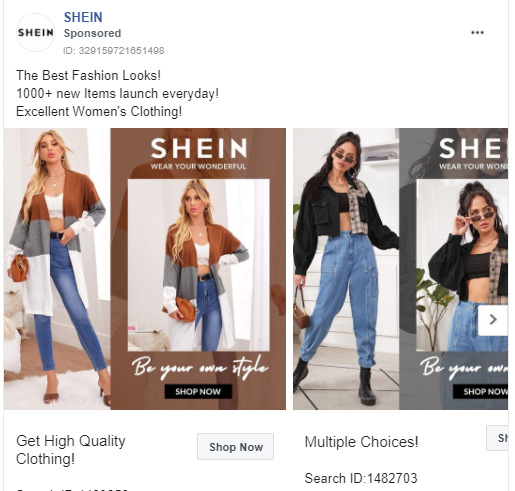
Include CTA in your Image or post content (Source: Facebook Ads Library)
Step 5: Invest in your content
Content is king. No matter how many ads run or how many followers to have, quality content will always drive in quality engagement and customers.
Learn how to create high quality, engaging content here
Step 6: Create a content calendar
In addition to all the trend-catching content, having a consistent content calendar is key to keep your audience in the loop. A content calendar will not only help you and your team keep track of your content, be more organized and plan ahead but also let customers know what and when to expect and release stress for the content team.
There are several tools to create a content calendar that helps marketers and entrepreneurs to manage and plan their content. Take a sneak peek at the app below if you run your eCommerce business hosted on Shopify!
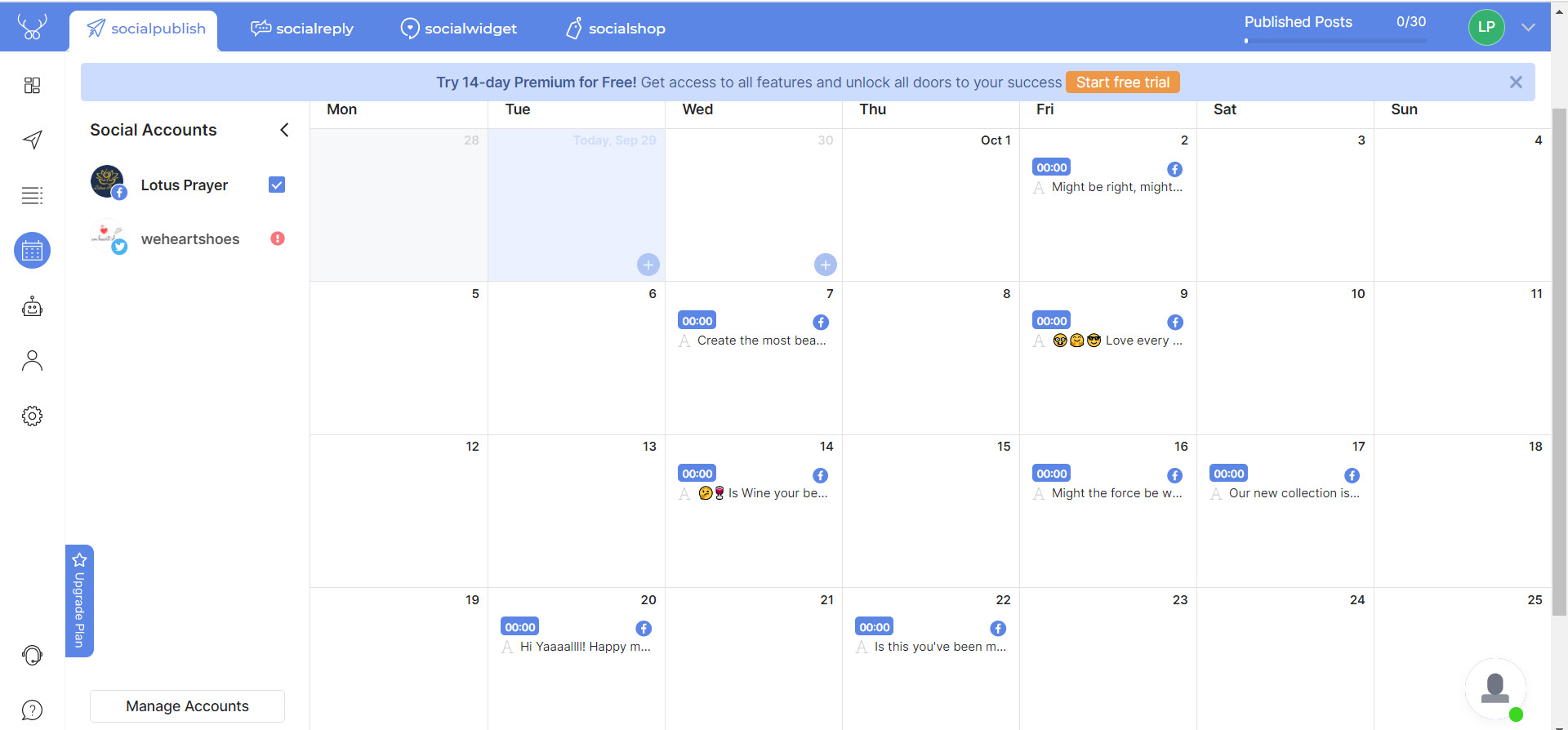
Socialpublish helps you create a content calendar within a few minutes
One of the best social media content calendar tools that are specialized for e-commerce merchants is Socialpublish, which syncs to Shopify and allows merchants to schedule, publish and plan their content in a drag and drop calendar. The perk of using Socialpublish is that it’s also integrated with multiple social media platforms including Facebook and Twitter, so users can easily manage all in one place.
During my years of experience in content marketing, having multiple social media platforms content calendar in one place is such a huge saver since it helped me visualize and plan out all content that I need and stay on top of my game for the trendy content that we want to create along the way.
Conversion rate
What is the conversion rate?
Conversion rate is the percentage of website visitors who complete the desired action (a conversion) out of the total number of visitors (or clicks)

Formula to calculate your conversion rate
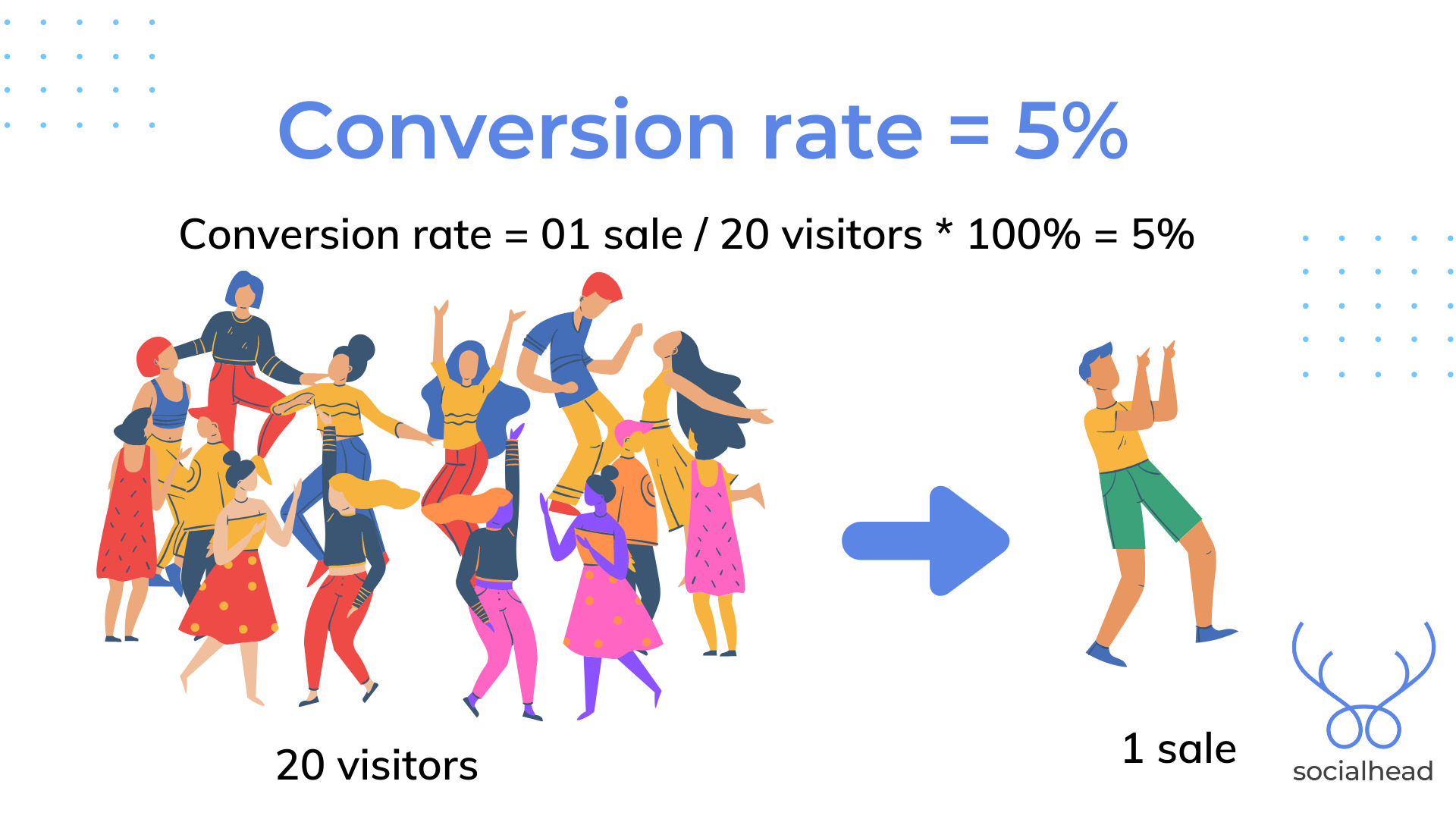
Conversion rate calculation for online business
Why conversion rate is important?
This Facebook metric indicates that people want what you offer and it’s easy for them to get it. Conversion is what all businesses want to get however, it’s not easy to convert visitors they acquire to conversion. Optimize conversion rate is important because it helps marketers make the most of the visitors that they acquire to generate more revenue while saving money on ads budget.
How to increase the conversion rate?
As mentioned before, the conversion rate shows whether people want what you offer and whether they can get it easily or not. So a low conversion rate could mean 3 things:
- Your offer is not what your visitors want or expect (your products might be too expensive or your content in the ads said different things to the landing page)
- It’s not easy to complete the action i.e the user experience is not good and your website design makes it difficult for users to do so.
- There’s no reason to buy for them which means they either don’t trust or don’t feel like they need your products.
A. Change your offer
I know that changing an offer is easier said than done since it will involve many departments in the company, you might have to go over countless processes for approval and it might even affect profit margin. However, you don’t necessarily need to change the price, all you have to do is change how your offer is being delivered.
For example: At Socialhead, we A/B test 2 offers: one is a 7-day free trial and the second one with a 14-day free trial. In fact, there wasn’t any change in the price, we just changed the time period of the trial. Can you guess which one is the winner?
For us, it’s the second deal since a 14-day free trial seems more attractive to our users and it allows them to have enough time to test out all of the functions that we offer in the premium plan.
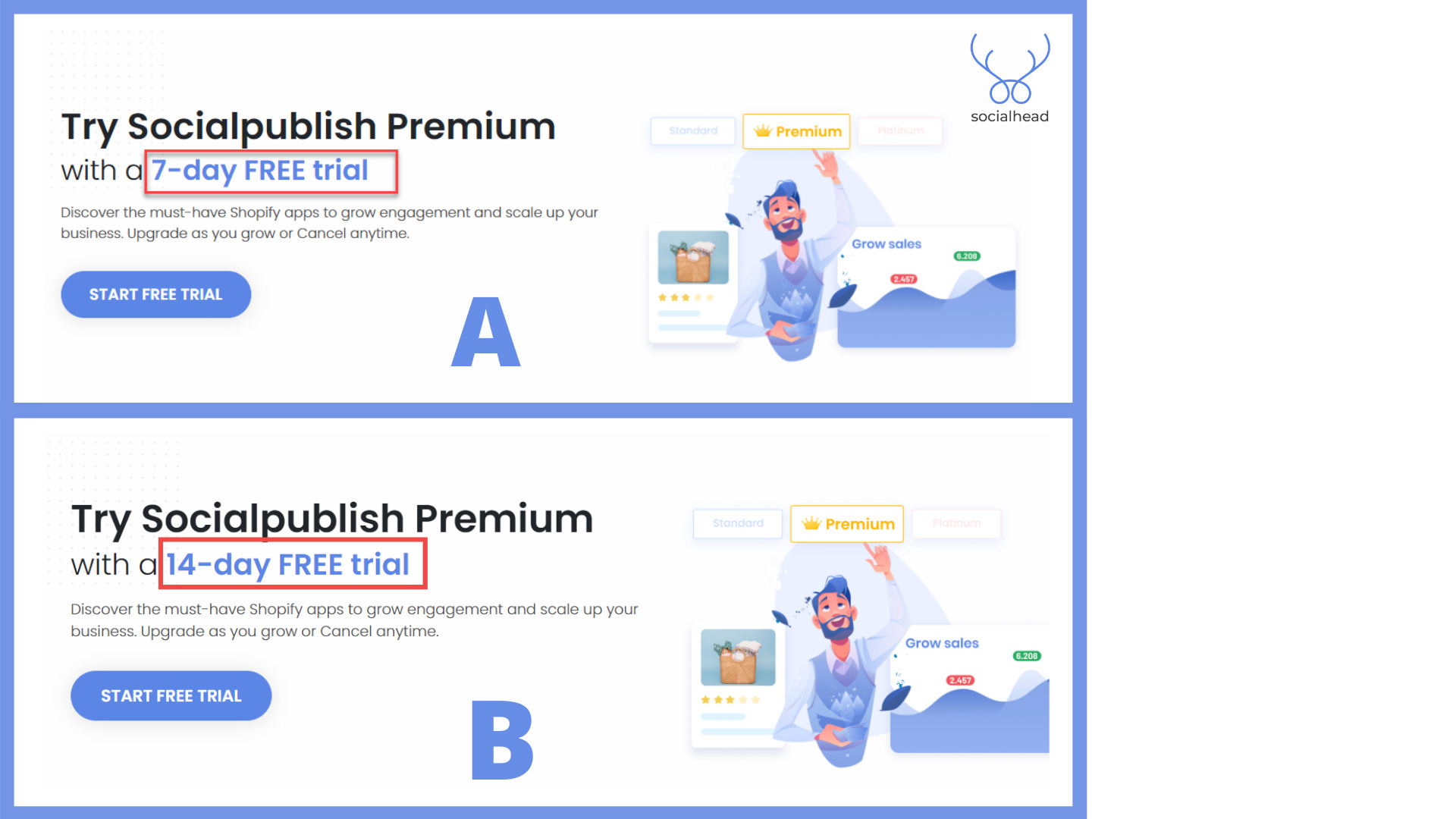
Socialhead A/B test their offer to attract more users
B. Improve User Experience
Once you’re sure that your offer is right for your audience, you can make incremental improvements to this Facebook metric by optimizing your site to improve user experience. Below are some basic conversion rate optimization tips:
- A/B test your landing page including design and content, then analyze the result to see which element in your landing page causing bouncing or drive more conversions
- Check out if your headline/content match with your ads’ message
- Enlarge the call-to-action button and make sure it appears in the right position
- Improve loading time since customers tend to leave if they can’t get what they want within 3s.
- Make sure that your website and landing page are responsive on different devices or at least mobile-friendly since up to 60% of customers check out on their phone
C. Include social proof
Finally, including social proof and testimonials on your landing page helps boost customers’ trust and gives them more reasons to buy in addition to the attractive offer. This seems obvious and simple but many eCommerce merchants indeed underestimate the power of social proof.
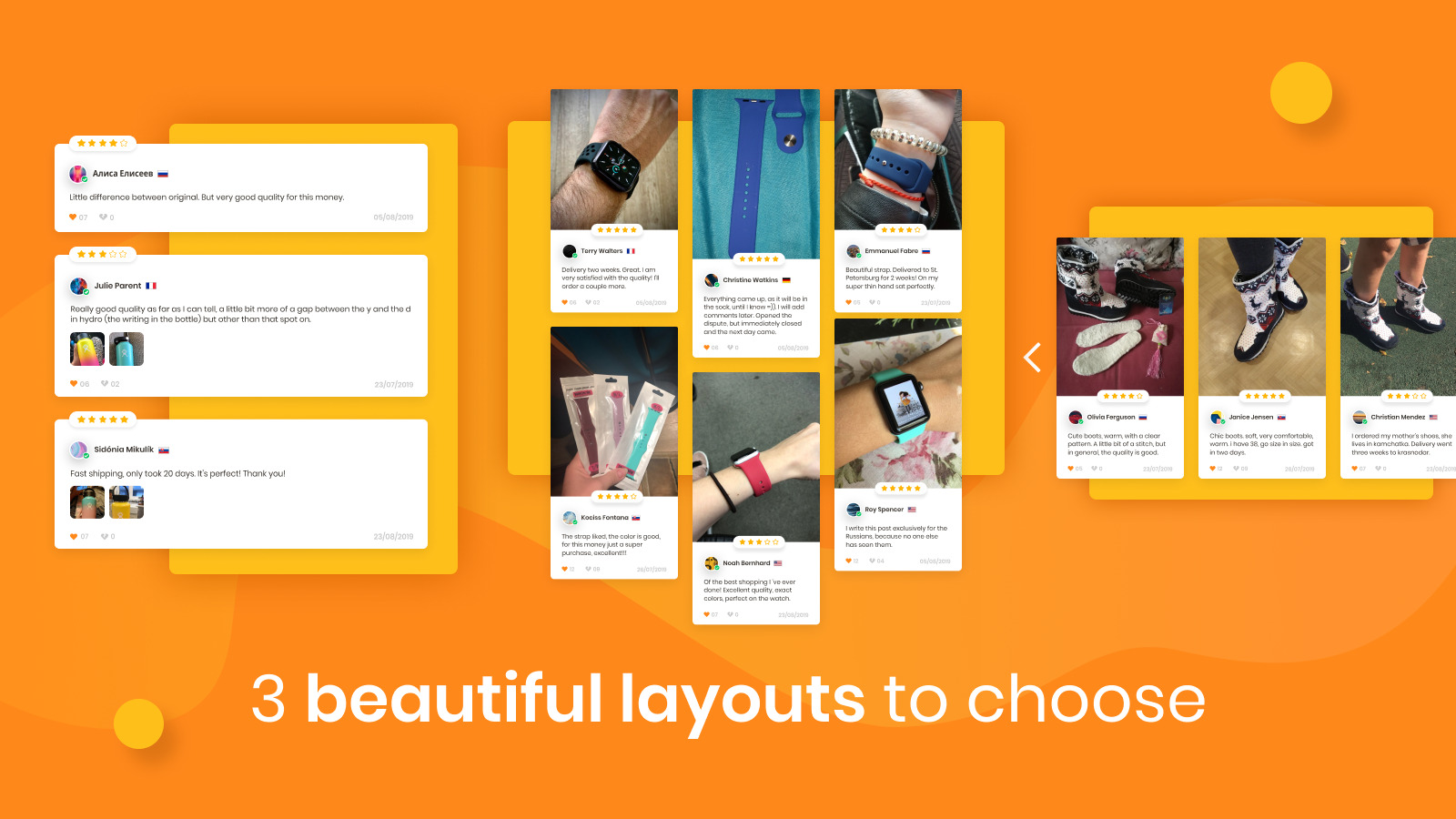
Ali Reviews is a Shopify app that allows merchants to bulk Import reviews from AliExpress to boost conversions
ROI or ROAS
What is ROI/ROAS?
ROI aka Return On Investment means the amount of money you get in return for your investment. Or many marketers and entrepreneurs prefer to use a similar term ROAS: the Return On Ads Spent to measure the success of their business.

Formula to calculate ROAS
Why is ROI/ROAS important?
These two Facebook metrics indicate how much you made out of the amount that you spent and it’s the most straightforward, most important metrics that businesses should care about when running a digital marketing campaign.
The higher the ROI is the more revenue you are getting out of your investment. If you don’t make the cut (ROI >=1) then you should really consider renovating your business.
No matter how many likes and comments or how many conversions that you got, if you won’t be able to get a good ROI, your business is unlikely to do well and scale-up.
How to increase ROI?
To improve your ROI, you can either increase your revenue, sales or cutting costs.
Focus on increase your revenue
You cannot improve what you can’t see so make sure that you have your revenue report every day to keep track of your business and sales growth. It’s also helpful to seek other revenue streams or scale up your business.

You should focus on generating more revenue
Automate your marketing
Believe it or not, increasing revenue is not an easy thing to do in the short term but cutting costs will affect your ROI immediately.
Automation can be a powerful way to leverage your ROI, it helps lift up all the heavy work for your team, and boosts up efficiency. In addition, it allows you to cut unnecessary HR costs and focus on other important things for your business.
One of the really helpful marketing automation tools that you can use for free is Socialpublish, which can auto post and promote your latest products and sales campaign to your audience. This can be a great way to get free traffic while saving time and resources for your business.
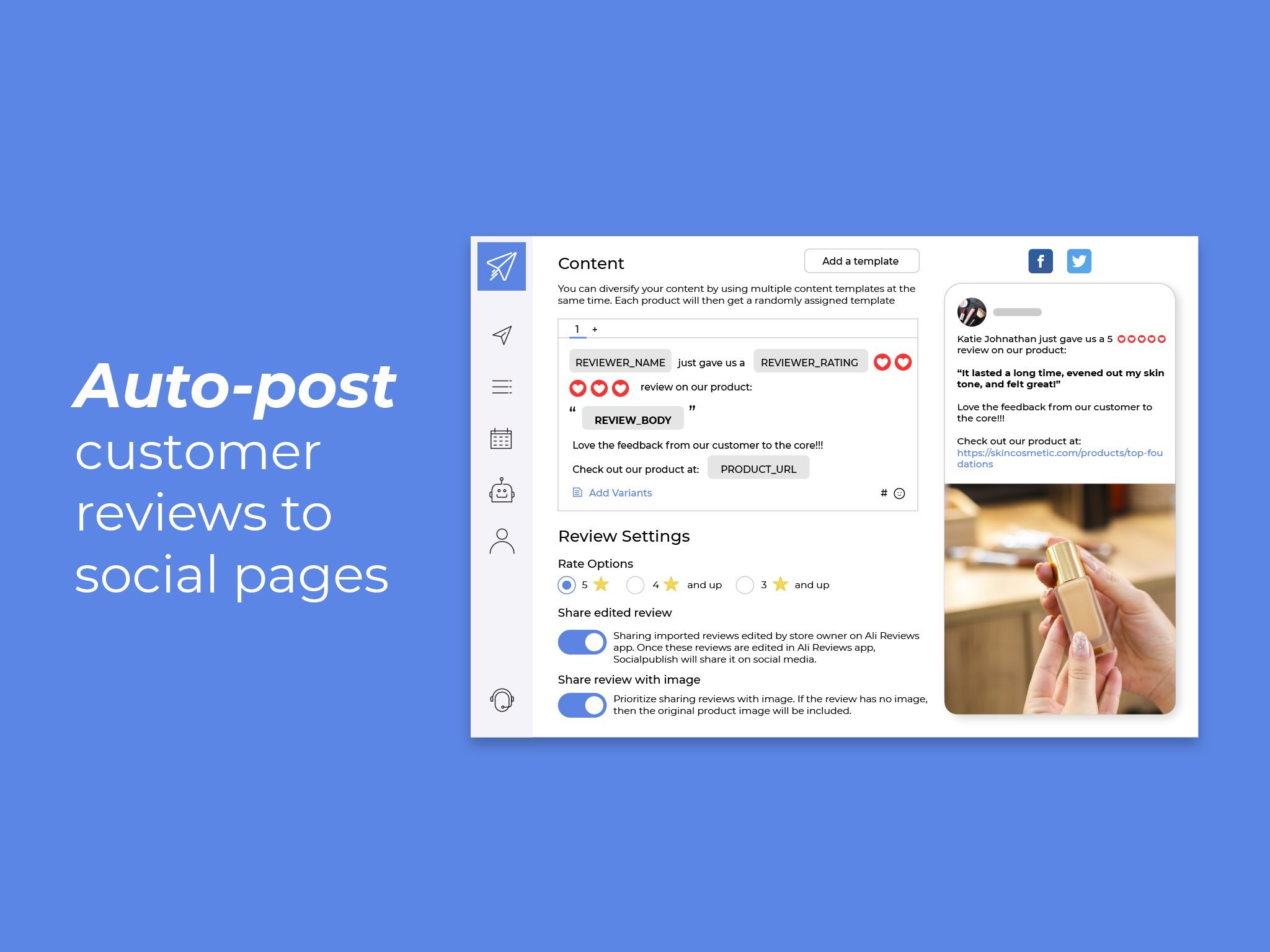
Auto-post your content on social media with Socialpublish helps you save time and money
Even the simple features Socialpublish offers such as a post scheduler and autopilot can help you take advantage of social media platforms without having to invest a ton of time every day.
Final thoughts
Even though page likes are important to brands as it’s one of the first metrics customers and partners look at to assess their brand influence. However, in 2021, Facebook page likes are not that relevant anymore if you really want to scale up and grow revenue. In fact, ROI, CTR, Conversion rate, and Engagement rate are the most crucial Facebookmetrics that you really need to measure and optimize as you grow your business online.
Bear in mind that, what you can’t see, you can’t act on, so having a dashboard where you can keep track of those Facebook metrics will benefit you and your team in both the long and short term.
 socialhead
socialhead
